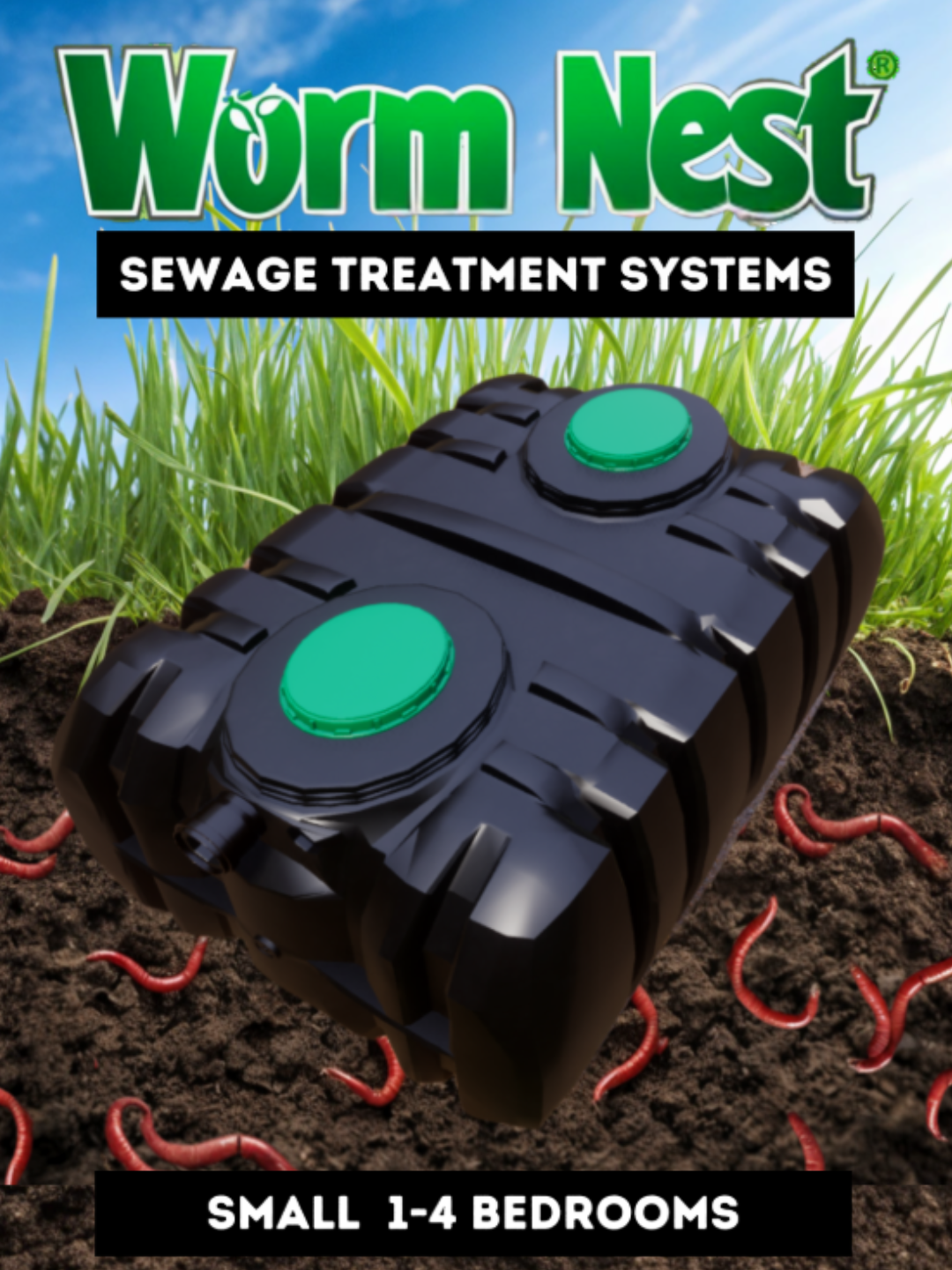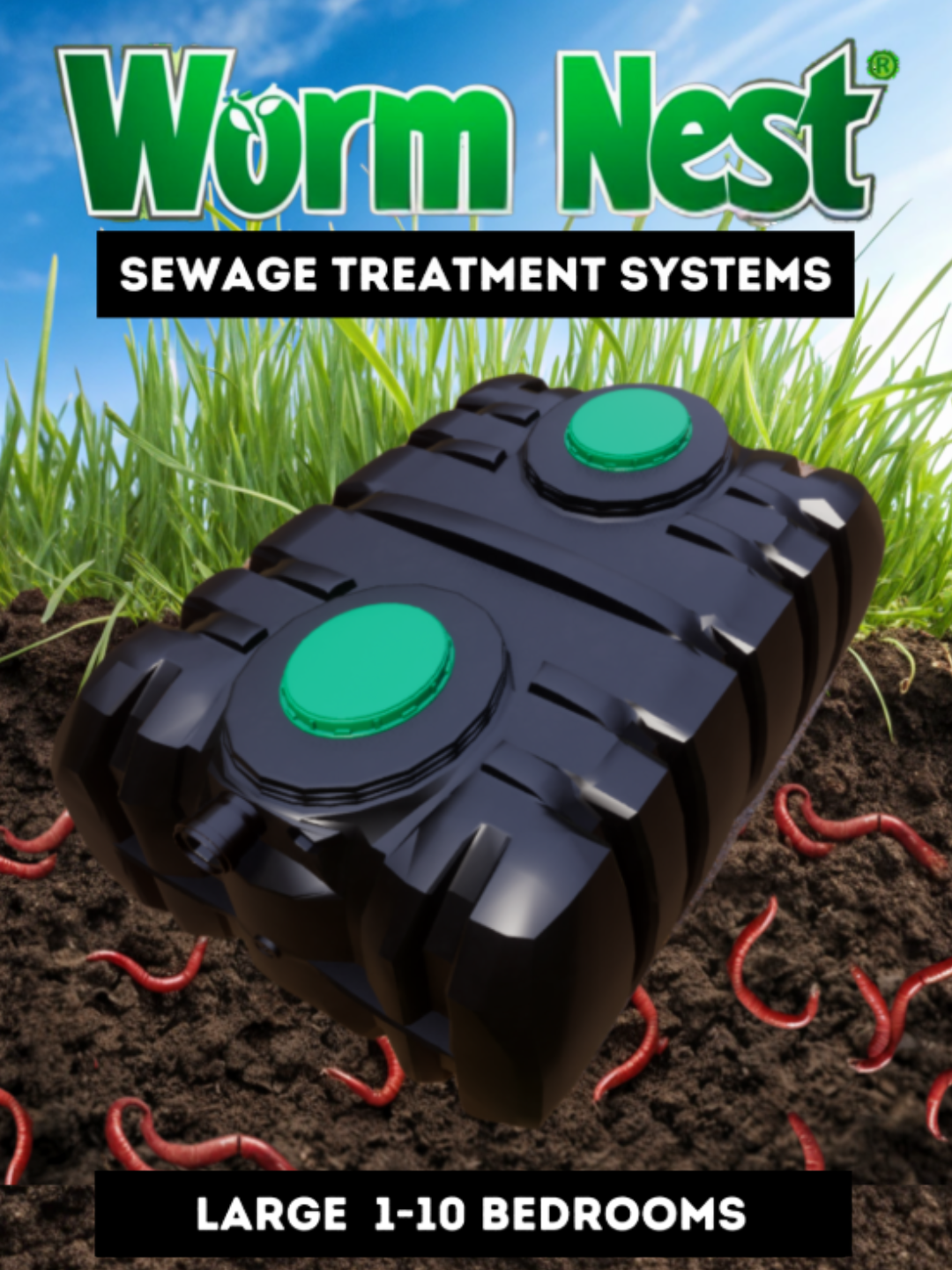Sewage Treatment Plant: Your Ultimate Guide to Wastewater Solutions
At septictank.co.uk, we provide the best and most affordable sewage treatment plants for domestic properties, businesses, glamping sites, mobile homes, and camping sites across the UK. If you’re searching for a reliable “sewage treatment plant” to manage wastewater effectively, you’ve come to the right place. Our systems offer advanced treatment, ensuring compliance with UK regulations and environmental sustainability. This comprehensive guide explores everything you need to know about sewage treatment plants, including sizing, science, installation, maintenance, and real customer experiences, helping you make an informed decision.
Sewage treatment plants are essential for properties not connected to mains sewers, particularly in rural UK areas. Unlike septic tanks, which provide basic treatment, sewage treatment plants deliver advanced processing, allowing safe discharge into watercourses or drainage fields. Whether you’re a homeowner, business owner, or managing a leisure site, our solutions at septictank.co.uk are tailored to meet your needs, offering efficiency, durability, and cost-effectiveness.
What is a Sewage Treatment Plant?
A sewage treatment plant is a sophisticated system designed to treat wastewater from households, businesses, or leisure facilities, producing effluent clean enough to be discharged into the environment. In the UK, these systems are critical for properties without access to public sewer networks, ensuring compliance with the Environment Agency’s general binding rules. Unlike septic tanks, which settle solids and discharge partially treated effluent to a soakaway, sewage treatment plants use biological processes to achieve a higher treatment standard, often meeting the 20:30:20 quality criteria for biochemical oxygen demand (BOD), suspended solids, and ammoniacal nitrogen.
Our range at septictank.co.uk includes compact systems like the Worm Nest Sewage Treatment Plant, ideal for small households, and larger units for commercial or multi-property use. These systems are engineered for low maintenance and high performance, making them a top choice for UK customers seeking reliable wastewater solutions.
How Sewage Treatment Plants Work
Sewage treatment plants operate through a multi-stage process to clean wastewater effectively. Understanding these stages helps you appreciate why they outperform septic tanks for many applications. Here’s a breakdown of how they work:
- Primary Treatment: Wastewater enters the primary chamber, where solids settle to form sludge, and lighter materials like grease float to the surface. This reduces the organic load before further treatment.
- Secondary Treatment: The biological phase uses aerobic bacteria to break down organic matter. Common methods include activated sludge (aeration tanks) or trickling filters, where microbes thrive on media to degrade pollutants.
- Tertiary Treatment: This optional stage polishes effluent, removing remaining nutrients or pathogens through filtration or disinfection, ensuring compliance with strict environmental standards.
Unlike septic tanks, which rely on anaerobic digestion and require a drainage field, sewage treatment plants produce cleaner effluent, often suitable for direct discharge to a stream or river, subject to permits. At septictank.co.uk, our systems are designed for efficiency, with features like air blowers to enhance bacterial activity, ensuring optimal performance for your property.
Choosing the Right Sewage Treatment Plant: Sizing Matters
Selecting the correct sewage treatment plant size is crucial for performance and compliance. In the UK, sizing is based on the population equivalent (PE), which estimates wastewater production. British Water provides guidelines to help determine the right capacity:
| Property Size | Population Equivalent (PE) |
|---|---|
| 1 bedroom | 2 PE |
| 2 bedrooms | 4 PE |
| 3 bedrooms | 5 PE |
| 4 bedrooms | 6 PE |
| Each additional bedroom | +1 PE |
For example, a 4-bedroom home typically requires a 6 PE system, such as our Worm Nest model at septictank.co.uk. Commercial properties, like glamping sites or offices, may need bespoke calculations based on usage patterns, such as guest numbers or staff. Factors influencing size include:
- Daily Wastewater Volume: Higher occupancy increases demand.
- Site Constraints: Available space and soil type affect installation.
- Budget: Larger systems cost more but ensure long-term compliance.
At septictank.co.uk, we offer free sizing consultations to match your needs, whether for a single home or a campsite. Our systems are compact yet powerful, balancing performance with affordability.
Installation and Maintenance of Sewage Treatment Plants
Proper installation and maintenance are vital for a sewage treatment plant’s longevity and compliance. Here’s what you need to know:
Installation
We recommend professional installation to meet Environment Agency standards. The process involves site assessment, excavation, and connection to drainage systems. Key considerations include ground conditions, proximity to watercourses, and permit requirements. At septictank.co.uk, we connect you with certified installers to ensure a seamless setup.
Maintenance
Regular maintenance keeps your system running smoothly. Annual servicing checks components like air blowers and pumps, while desludging (removing accumulated sludge) is needed every 1-2 years, depending on usage. Licensed waste carriers must handle sludge disposal, per UK regulations. Our systems at septictank.co.uk are designed for low maintenance, with user-friendly access points to simplify checks.
The Science Behind Sewage Treatment Plants
Sewage treatment plants rely on microbiology and chemistry to transform wastewater into safe effluent. The core process is aerobic digestion, where bacteria break down organic matter in oxygen-rich conditions. Key scientific principles include:
- Aerobic Digestion: Bacteria convert organic compounds into carbon dioxide, water, and biomass, reducing BOD.
- Nitrification: Ammonia is oxidized to nitrates by nitrifying bacteria, lowering nitrogen levels.
- Denitrification: In low-oxygen zones, nitrates are reduced to nitrogen gas, further purifying effluent.
Optimal conditions—temperature (10-35°C), pH (6.5-8.5), and oxygen supply—are critical for bacterial efficiency. A 2017 study in ScienceDirect (Comparison on efficiency) found that modern sewage treatment plants achieve up to 95% pollutant removal, highlighting their effectiveness. At septictank.co.uk, our systems leverage these principles, using advanced aeration to maximize treatment quality.
Frequently Asked Questions (FAQ) About Sewage Treatment Plants
We’ve compiled answers to common questions to help you understand sewage treatment plants better, ensuring you choose the right solution.
What is the difference between a sewage treatment plant and a septic tank?
A septic tank provides primary treatment, settling solids and discharging effluent to a drainage field for further filtration. A sewage treatment plant offers advanced biological treatment, producing cleaner effluent suitable for watercourse discharge, often without a soakaway. Our systems at septictank.co.uk cater to both needs, with plants ideal for stricter environmental requirements.
How do I size a sewage treatment plant?
Sizing depends on the population equivalent (PE). For homes, use the table above (e.g., 6 PE for 4 bedrooms). For businesses, estimate based on usage, like 10 PE for a small office. We offer free sizing advice at septictank.co.uk to ensure accuracy.
How often should a sewage treatment plant be serviced?
Annual servicing is recommended to check mechanical parts. Desludging occurs every 1-2 years, depending on load. Regular maintenance prevents costly repairs and ensures compliance.
Can I install a sewage treatment plant myself?
While DIY is possible, professional installation ensures compliance with UK regulations, like the Environment Agency’s rules. Our team at septictank.co.uk connects you with experts for hassle-free setup.
What are the running costs?
Costs vary by system size and electricity use (for air blowers). Small domestic plants may cost £50-£100 annually in power. Maintenance contracts start at £150/year, offering peace of mind.
Are sewage treatment plants environmentally friendly?
Yes, they produce high-quality effluent, reducing pollution compared to septic tanks. Compliance with 20:30:20 standards ensures minimal environmental impact.
Can I use a sewage treatment plant for a glamping site?
Absolutely. Our systems at septictank.co.uk are perfect for glamping or camping sites, with scalable sizes to handle variable guest numbers.
What permits do I need?
Under the Environment Agency’s general binding rules, no permit is needed for discharges to drainage fields under 2m³/day. Watercourse discharges require a permit if over 5m³/day. We guide you through requirements at septictank.co.uk.
How long does a sewage treatment plant last?
With proper maintenance, quality systems last 20-30 years. Our durable units are built for longevity, offering excellent value.
What happens if my plant overflows?
Overflows are rare with correct sizing and maintenance but can occur from blockages or heavy rain. Regular checks prevent issues, and our team provides emergency support.
Can I upgrade my septic tank to a sewage treatment plant?
Yes, upgrades are common for better treatment or compliance. We assess your site to recommend the best system at septictank.co.uk.
Are there noise issues with sewage treatment plants?
Modern systems are quiet, with air blowers producing minimal sound (similar to a fridge). Our models prioritize low noise for residential comfort.
How do I know if my plant is working properly?
Clear effluent, no odors, and steady operation indicate a healthy system. Annual checks confirm performance, and we offer monitoring tips.
What are the installation costs?
Costs start at £1,500 for small systems, varying by size and site complexity. Contact us for a tailored quote.
Why choose septictank.co.uk?
Our expertise, affordable prices, and customer-focused service make us the top choice for sewage treatment plants in the UK.
Customer Reviews and Case Studies
Our customers love the reliability and support we provide at septictank.co.uk. Here’s what they say:
- John D., Devon: “The Worm Nest system is efficient and low-maintenance. Highly recommended for rural homes.”
- Sarah M., Yorkshire: “Expert advice made choosing and installing our plant smooth. Great service!”
- Mike T., Cornwall: “Perfect for our glamping site. Handles guest loads with no issues.”
A 2020 study in PubMed Central (Efficiency of Wastewater Treatment Plants) analyzed small-scale plants, finding they remove up to 90% of microplastics and pollutants, reinforcing their value. For example, a Somerset campsite installed our 12 PE system, reducing environmental impact and earning positive guest feedback for sustainability.
Conclusion
Choosing the right sewage treatment plant is a smart investment for your property, ensuring compliance, efficiency, and environmental protection. At septictank.co.uk, we offer the best and cheapest solutions for homes, businesses, and leisure sites across the UK. From sizing to science, our guide covers everything you need to make an informed choice. Contact our team today for expert advice and tailored recommendations, and discover why we’re the trusted name in sewage treatment plants.
Ready to upgrade your wastewater system? Visit our product page or call us to start your journey toward a cleaner, greener future.


